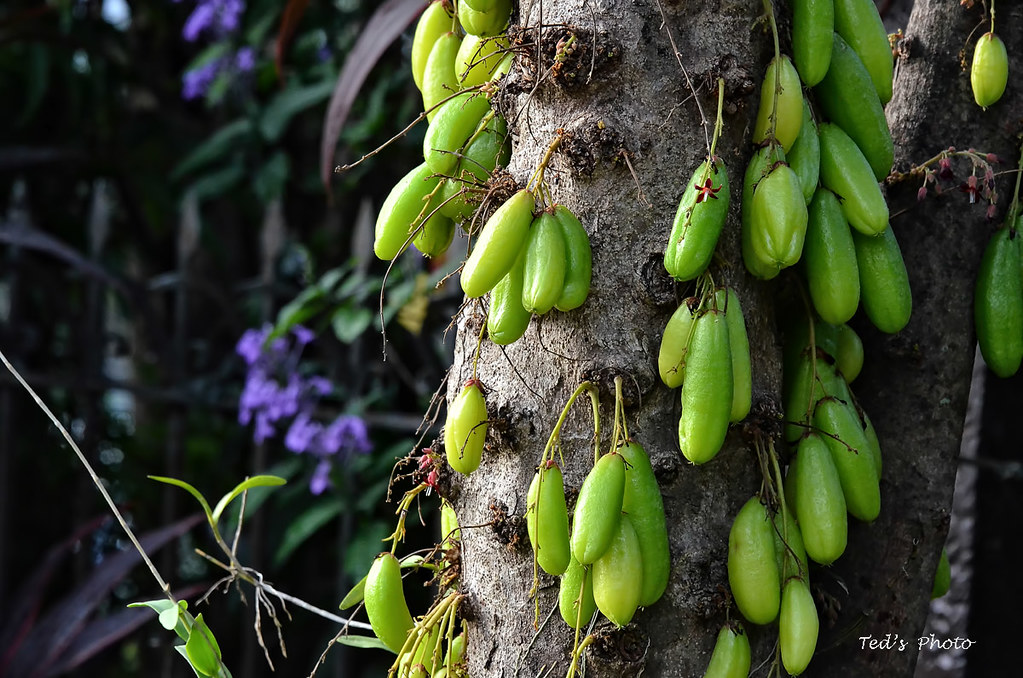
Kamias, also known as “bilimbi” or “cucumber tree,” is a tropical fruit tree that is native to Southeast Asia. The tree is known for its small, sour fruits that have a unique cucumber-like taste. In this article, we will delve into the various facts about Kamias, including its nutritional benefits, uses, and cultural significance.
Uses of Kamias
The sour fruits of Kamias are often used in cooking as a souring agent. They are a popular ingredient in Southeast Asian cuisine, particularly in dishes such as sinigang, a tamarind-based soup. The fruits are also used to make jams, jellies, and pickles. In addition to its culinary uses, Kamias is also used as a natural dye and as an ingredient in various beauty products.
Cultural Significance of Kamias
In Southeast Asian cultures, Kamias is believed to have spiritual and medicinal properties. In Philippines, the tree is often planted near homes and is believed to bring good luck and prosperity. The fruit is also used in traditional ceremonies and is believed to have healing properties.
Growing Kamias
Kamias is a tropical fruit tree that thrives in warm and humid climates. It is easy to grow and can be propagated by seed or by cuttings. The tree is drought-tolerant and can grow in a variety of soils. However, it prefers well-drained soil and full sun. The tree can reach a height of up to 15 meters and can bear fruit within 2-3 years.
Culinary Delights with Kamias
The sour and tangy taste of Kamias makes it a perfect ingredient for many dishes. In the Philippines, it is a popular ingredient in sinigang, a sour and savory soup made with tamarind and various meats or seafood. The fruit is also used in other Southeast Asian cuisines such as Thai and Malaysian dishes, adding a unique and delicious flavor to curries and stews.
Kamias can also be used to make different types of preserves and pickles. The fruit can be pickled in vinegar and spices, or made into a sweet and tangy jam. These preserves are a delicious addition to sandwiches and can be used as a condiment for meats and seafood.
In addition to its savory uses, Kamias also has culinary applications in desserts. The fruit can be used to make a refreshing sorbet or ice cream, and its unique flavor pairs well with other tropical fruits such as mango and pineapple. Kamias can also be used to make a delicious jelly or cheesecake filling.
Health Benefits of Kamias
Kamias is not only delicious, but it also has many health benefits. The fruit is high in Vitamin C and antioxidants, which can help boost the immune system and protect against disease. It is also a good source of dietary fiber and minerals such as potassium and calcium.
The fruit’s anti-inflammatory properties make it a useful ingredient in traditional medicine. It is believed to be effective in treating diarrhea, fever, and hypertension. Kamias is also used to treat skin conditions such as eczema and acne. The juice from the fruit can be applied topically to soothe irritated skin and reduce inflammation.
Kamias is also believed to have anti-cancer properties. Studies have shown that compounds found in the fruit may have the ability to inhibit the growth of cancer cells. However, more research is needed to fully understand the potential anti-cancer properties of Kamias.
Conclusion
Kamias is a tropical fruit that is not only delicious but also has many health benefits. It is a great ingredient to add to your cooking, whether you’re making a savory soup or a sweet dessert. Its unique flavor and nutritional benefits make it a valuable addition to any diet. If you’re looking for a new and exciting ingredient to experiment with, give Kamias a try and discover the many ways in which it can enhance your cooking and improve your health.
5 Frequently Asked Questions about Kamias:
What is kamias and what does it taste like?
Kamias, also known as bilimbi or tree sorrel, is a small, green fruit native to Southeast Asia. It’s a popular ingredient in many tropical regions. The fruit itself is very sour due to its high content of citric acid and vitamin C. It’s too tart to eat raw for most people.
How can you enjoy kamias?
While too sour on its own, kamias finds uses in various delicious ways. Here are some popular options:
Dishes and drinks: Kamias is a common addition to savory dishes in Southeast Asia, used in soups, stews, and pickles to add a sour tang. It’s also used in refreshing drinks like juices and ades to provide a sour kick and a boost of vitamin C.
Preserves: Kamias is excellent for making jams, jellies, and chutneys. The sugar balances the tartness, creating delicious condiments.
Candied kamias: In some regions, people candy or dry kamias slices for a sweet and tangy snack.
Does kamias have any health benefits?
Kamias offers a range of potential health benefits:
Rich in Vitamin C: Kamias is a great source of vitamin C, important for immune function, collagen production, and antioxidant activity.
Antioxidant properties: Studies suggest kamias extracts may have antioxidant properties, helping protect cells from damage.
Potential blood sugar control: Some research indicates kamias extracts might have properties that aid in blood sugar regulation, though more studies are needed.
How is kamias used in traditional medicine?
In traditional medicine practices, various parts of the kamias plant, including leaves, flowers, and fruits, are used for various purposes. Some believe it may help with coughs, fevers, skin conditions, and other ailments. However, it’s important to consult a healthcare professional before using kamias for medicinal purposes.
How can I grow a kamias tree?
Kamias trees are known for being low-maintenance and relatively easy to grow in warm climates. They prefer well-drained soil and plenty of sunshine. Propagation can be done through seeds or cuttings. With proper care, a kamias tree can provide you with a steady supply of these tangy fruits throughout the year.








